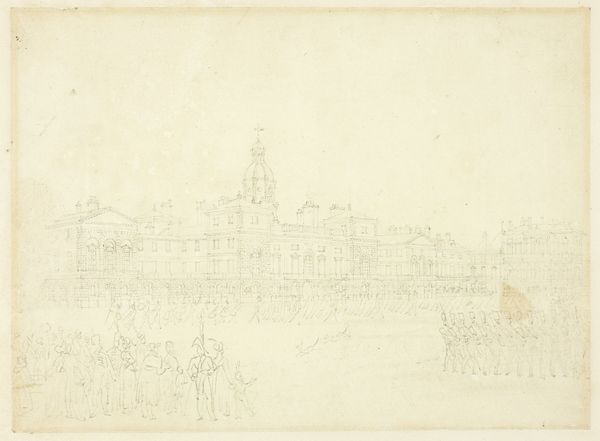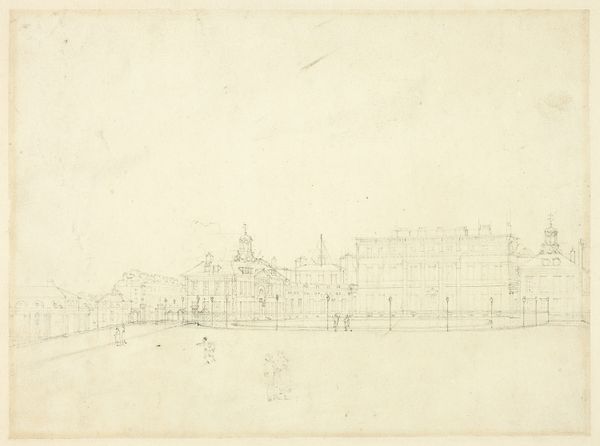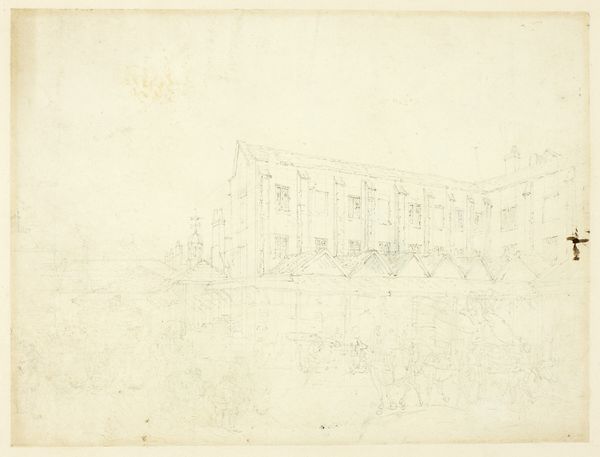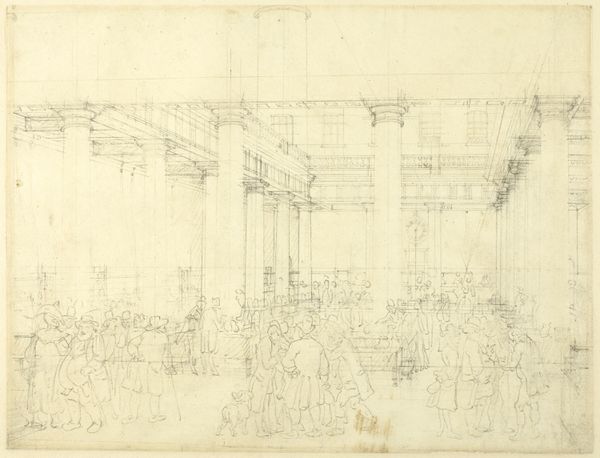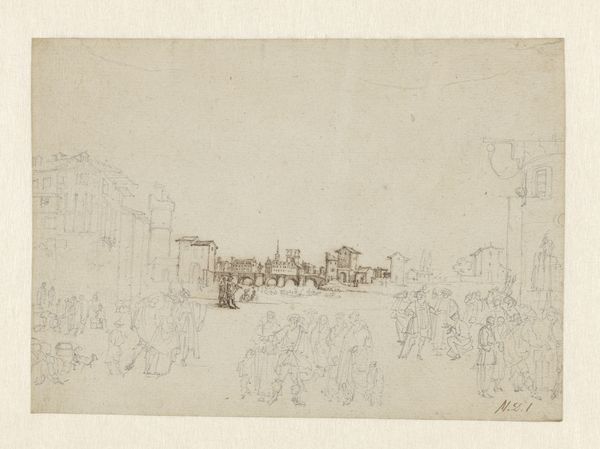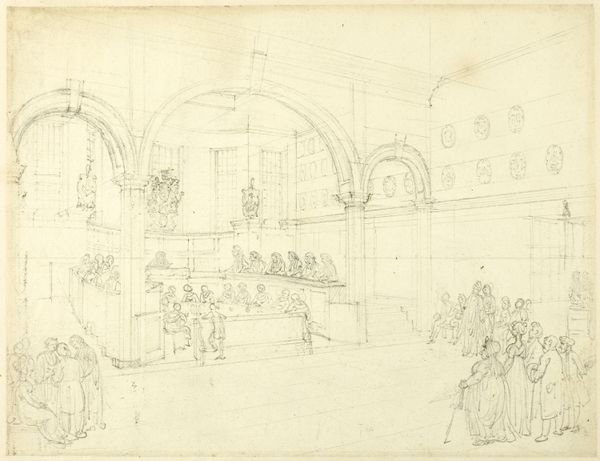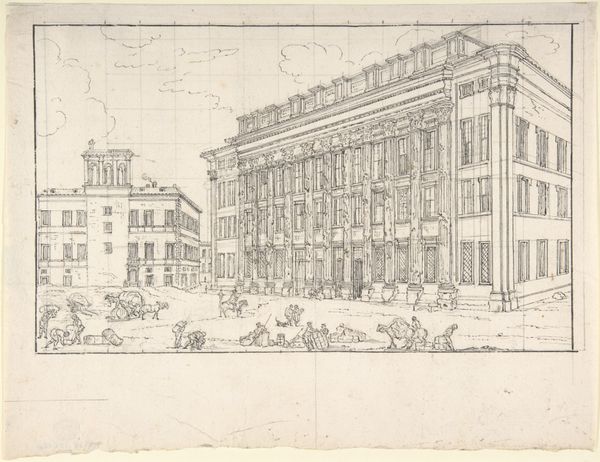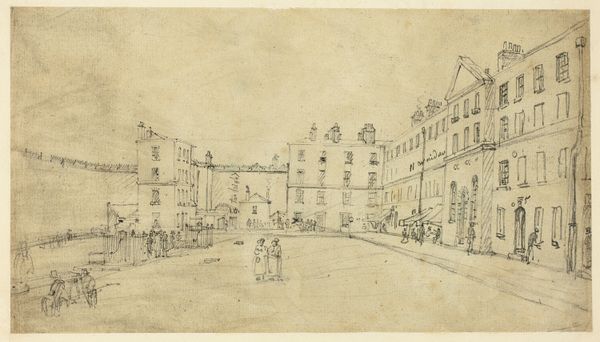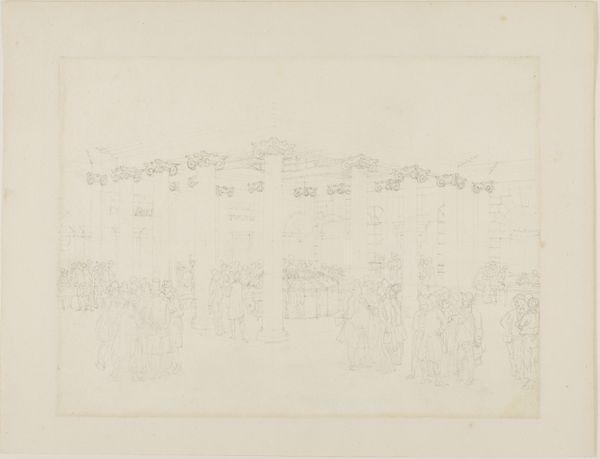
Study for King's Bench Prison, from Microcosm of London c. 1808
0:00
0:00
drawing, print, etching, paper, graphite
#
drawing
#
neoclacissism
# print
#
etching
#
landscape
#
etching
#
paper
#
personal sketchbook
#
england
#
graphite
#
cityscape
Dimensions: 190 × 259 mm
Copyright: Public Domain
Curator: This is a study for "King's Bench Prison, from Microcosm of London," an etching and graphite drawing on paper, made around 1808 by Augustus Charles Pugin. Editor: My first thought is: bleak elegance. There's a formal, neoclassical structure, but the sketchy lines and muted tones evoke a profound sense of constraint and social stratification. Curator: Absolutely. Pugin was intensely interested in architecture as a reflection of societal values and power structures. "Microcosm of London," as a whole, sought to document various aspects of London life, including its darker corners, like the prison system. Consider how architectural design intersects with class and confinement. Editor: You know, looking at the density of figures, rendered so plainly, suggests labor as the undercurrent. Paper, graphite, and etching – the material production seems quite democratic in its approach, making visible spaces meant to be hidden, challenging the traditional definition of “high art”. What social mobility was there in producing works based around incarceration? Curator: In this context, the choice of the architectural landscape format seems poignant. Landscape has traditionally represented freedom and expansiveness, but here it is used to portray the walls of imprisonment, commenting on both physical and social mobility, or lack thereof. What does it say about freedom and agency for people with constrained options or those born into certain class positions? Editor: I am intrigued by the apparent contradiction. Neoclassicism itself suggests an aspirational ideal of order, whereas the realities within this space – confinement and restriction – point to the human cost and struggle. I guess what resonates most is the visibility he's managed to bring to people caught up in something like King’s Bench. It certainly compels questions regarding class, the system, and inherent justice. Curator: Exactly. Pugin offers us a glimpse into a system where societal order often perpetuates inequities. Reflect on the narratives, power structures, and their impact that an artist's perspective of spaces can tell us. Editor: Right, by emphasizing process, material, and visibility Pugin allows us to think more deeply about imprisonment. The constraints and impact of labor of simply documenting it raises many critical questions still relevant to the contemporary moment.
Comments
No comments
Be the first to comment and join the conversation on the ultimate creative platform.

